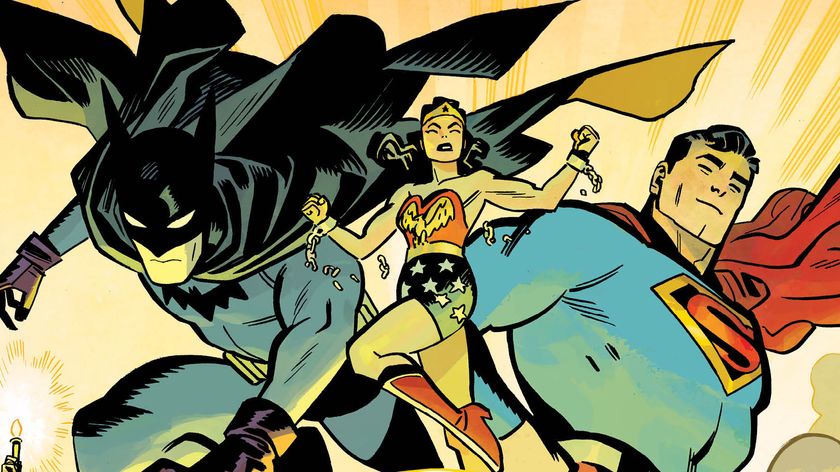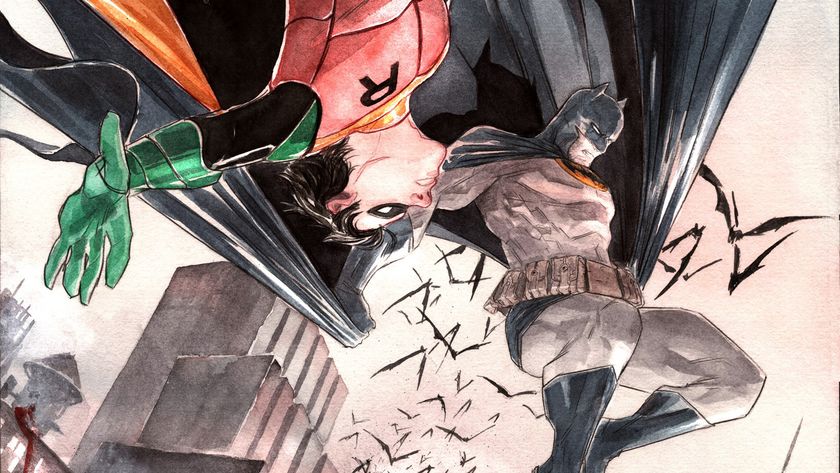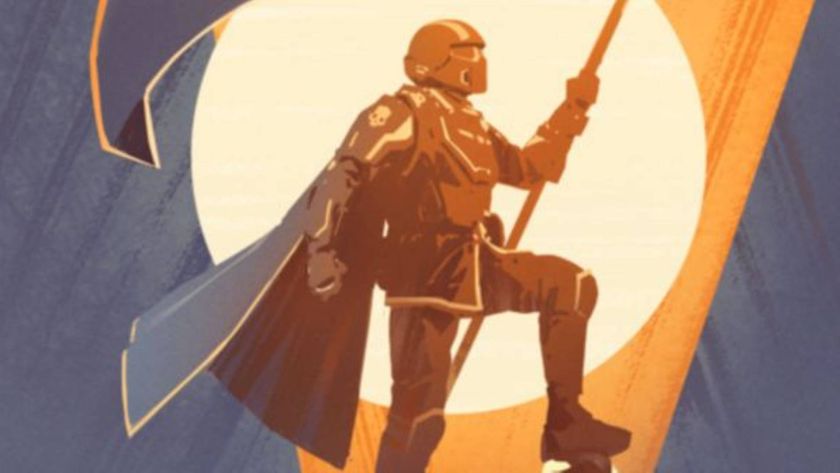Lee Bermejo's unique Batman: Dear Detective can be judged by its covers
The prestige format art book/noir story is a first for Batman and DC
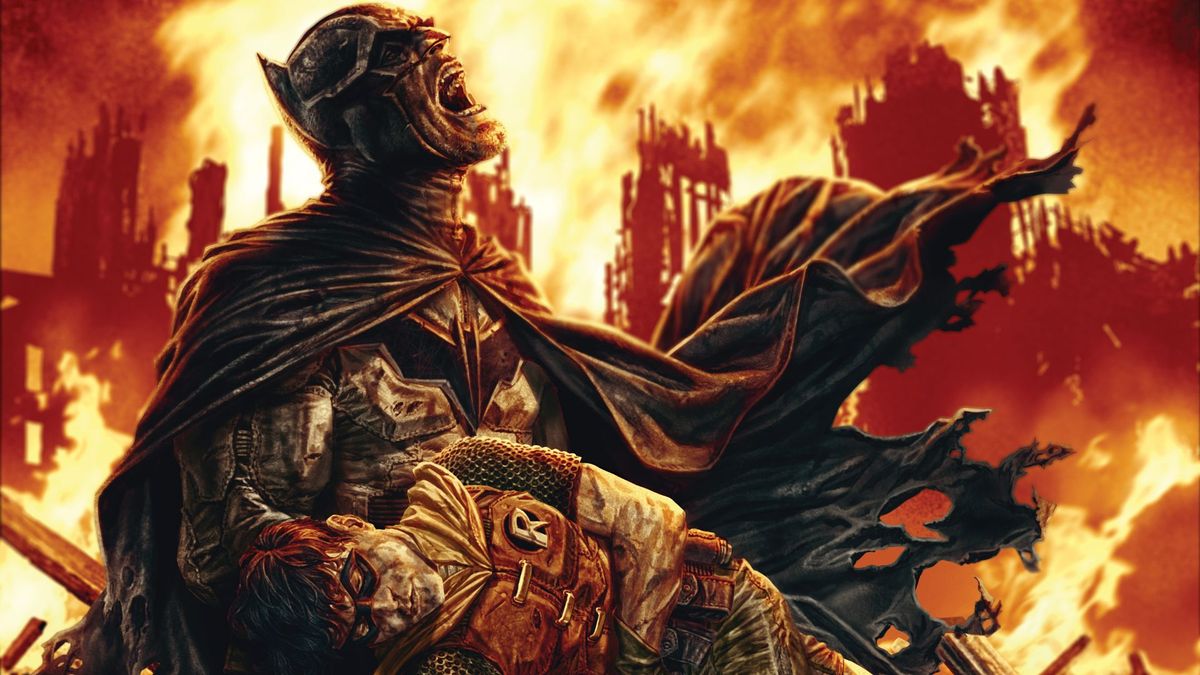
Comic book covers always tell a story. Usually, that story is a kind of teaser, a dramatic hint at what's going to go on in the pages underneath. But there's nothing 'usual' about a Lee Bermejo cover, and that applies to the stories that they tell. Or rather, the story that they tell.
Bermejo's latest project, Dear Detective, takes comic cover storytelling in an entirely new direction, weaving together Bermejo's previous Batman covers into what the publisher calls "one part prestige art book, one part compelling noir tale" for the Dark Knight in a 56-page special. Ahead of the title's release on September 6, Newsarama sat down with Bermejo to talk about this Batman comic unlike any other.
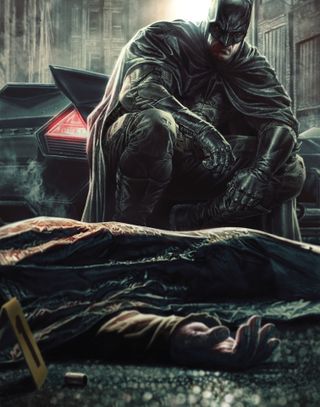
Grant DeArmitt for Newsarama: Lee, to begin, can you tell me about your Batman? Is this a Post-Knightfall version of the character? A New 52 version? What era does the Batman of Dear Detective come from?
Lee Bermejo: I've never had much of an affinity for continuity, even though I've followed it most of my comic reading life. I've read a lot of what's been done in continuity, but because I've never really worked in continuity, I try to think about the character a bit differently. I don't ever want to place him in one specific time. I would prefer for anybody to be able to come to the books that I do and enjoy them for what they are, without needing a whole lot of previous knowledge of the character. I try to do comics that even a non-comic book reader, like my brother, for example, could pick up and not need a whole lot of previous knowledge to enjoy. It's important for me for the book to feel evergreen.
However, I also have to tip my hat to major moments in Batman history. There are certain elements of that character that loom, I think, very heavily in the mythos. So even in this book, there's the death of Robin cover and the idea that the Joker was responsible. Even if I don't feel like those things need to be specifically said, because maybe, for example, my brother might not know that the Joker is responsible for killing Robin in continuity. But the idea that Robin has died, I think, has become part of the larger Batman mythos. Even people outside of comics might have heard of that, things like the Death of Superman, all these kinds of things. I try to tread water between something that's specific and something that's broad and more iconic. To try and find a middle ground there.
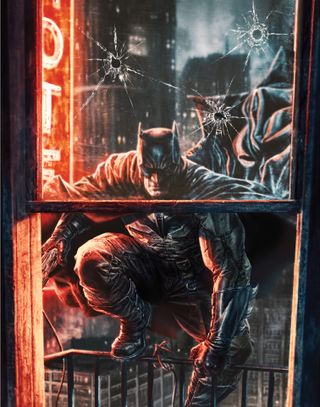
Also, I don't like the idea of anchoring the books, because I've noticed with my own work that things tend to transform anyway. And I like that. I like the fact that books have a natural evolution and that they find new readers. People grow up with the books and they become part of that person's Batman mythology.
Nrama: It is a really evergreen book. No matter what era of Batman you're most familiar with, you're going to have an emotional reaction. Was that your intention in writing Dear Detective? Or in doing these Detective Comics covers that make it up?
Comic deals, prizes and latest news
Get the best comic news, insights, opinions, analysis and more!
Bermejo: When they offered me Detective Comics covers, the first thought that crossed my mind was that is the DC book. DC is Detective Comics. So I thought, what is it about Detective Comics that makes it different from a Batman book? From the main Batman title? Even if in a very subtle way. That to me will always be just the fact that it's in the name. It should be a detective story. It should be, if not a mystery, you should be discovering something through the book as a detective would.
I've always tried to approach every project I do as something different. And I've done plenty of cover runs; I've done Hellblazer covers, a number of different cover gigs. But I've never seen anybody try to tell a broad narrative using covers. And so that was really what I wanted to do from the very beginning, was to try to use the cover medium and also give people something more, so that when this whole thing is said and done, it can be seen in a new way. Maybe each of the images can be appreciated a little bit differently than it was for that specific issue.
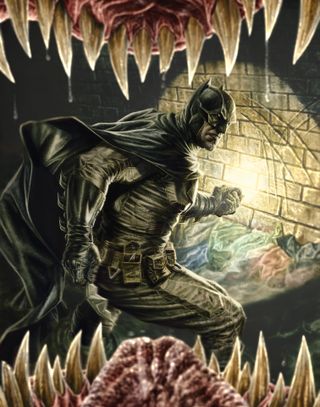
Because Batman is eighty-some years old at this point, and a million different stories have been told, I didn't feel like doing another traditional comic book. For me, after having done a number of them, I thought it would be more interesting to try and do something broader. A bit more… I hate to use the word iconic because it seems very snooty, but I don't mean iconic in the sense that it's the greatest Batman story ever told. I mean iconic in the sense that you can look at it from above and see the images for what they are and not need - like I said - a whole lot of back story or previous interaction with the characters.
So that was really the idea, a broader, less specific story that just fits with cover images. Because it's a single image every time, it's not that different from doing a book of just splash pages, but given that every month the book requires something different, I can't just set up with this idea and do whatever I want. I also had to change the covers for what they needed for the book at the time. They needed specific characters to show up sometimes, and I needed to find a way to still have that fit within my overall narrative but also serve the book. It made a cover gig more challenging, maybe more rewarding, and ultimately more fun. Just more fun to try and see if I could pull it off, at the end of the day.
Nrama: It's fun for the reader too, especially because you do have that detective aspect of piecing together things. Not only are we piecing together the narrative, but we're also piecing together this other mystery of a Zodiac-like villain who is writing Batman letters. How did you approach creating that villain? What's going through your mind as you're writing those letters?
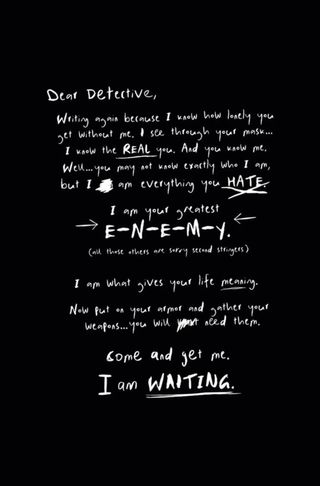
Bermejo: I obviously read a lot of that stuff before starting to write the actual letters. I wanted it to feel… maybe authentic is a bad word, but I wanted it to come across like one of those Zodiac letters, even with the clues and symbols instead of letters. Luckily I had Jared Fletcher who just did a fantastic job lettering. He was really a huge piece of the puzzle there.
[The enemy] came down to me thinking, okay, what's the broadest Batman story I can tell? And that gave me the answer right there of who this villain is going to be. Without giving anything away for people, I thought it was interesting to look at it in a bigger sense than just looking inside Arkham Asylum and seeing who I want to use. I wanted it to come back to Batman and who Batman is and what he's all about.
When I was first talking about this idea, when I was first doing the covers and saying hey, I wanted to tell a story with the covers, the editors said, 'I don't know if you should do that. It might distract from the story inside the book.' And I said, 'Well, I think there's a way to do it where I'm not referring to what's going on inside the book, and ultimately when this thing is all collected and said and done, those issues will be long out and people will have digested that stuff.' So that also made me think about it in a broader sense.
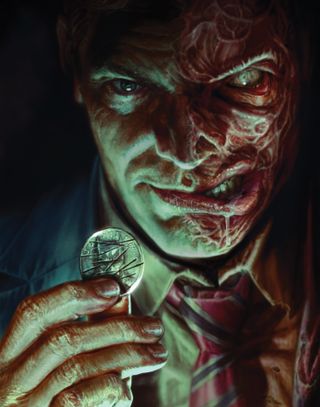
I think it's more interesting for people to involve themselves in storytelling, to draw their own conclusions. The images certainly can connect and there is some connectivity between them, but I didn't want to be slavish to that in a traditional, sequential way of storytelling. I love that idea, especially with work that I do being so realistic. You know, the artwork itself doesn't leave a whole lot to the imagination. So I hope that the storytelling aspect of this would engage readers in a different way than they are used to engaging with a Batman comic.
Nrama: That's such a great goal, you've definitely done that here.
Bermejo: Thanks. What I wanted people to do is, at the end of the day, involve themselves as much as they want. Part of me kind of hopes that somebody is going to come at me and say, 'I would have put this cover here; I would have re-sequenced this; I would have told the story this way.' Just because that would indicate that they have involved themselves in such a way that they're drawing some of their own conclusions. And maybe that's not where the story went for them, and that's fine for me. Anything that gives me some kind of or that allows readers to involve themselves I think is good.
So yeah, some people are going to want that person, the enemy, to be the Mad Hatter. Or they're going to want more specifics. But looking at the book as an object unto itself, I wanted it to be a statement about Batman if told by what could be this serial killer-esque villain. Or it could be something else entirely.
Nrama: I love that that's an open question. I love that it could be a person, it could be a theme, it could be something going on in Batman's own head. I love that.
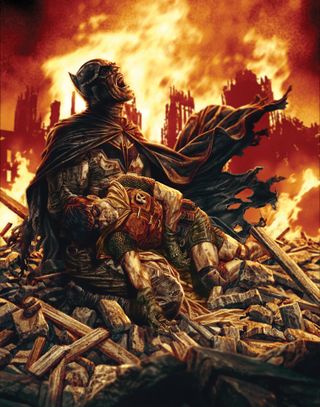
Bermejo: And it's always right there. Brian [Azzarello] and I talked about this all the time, which is, what is the worst thing for Batman? Like, what is the worst thing that, in his mind, is his true enemy. It's not the Joker, it's not the specifics of who he's battling. The idea is very mercurial. So if you're going to do something broad like this, you might as well just make it not a specific villain, but make it more.
Nrama: Very cool. Alright, wrapping up here, let's say you were to do another book like Dear Detective, an untraditional, non-sequential graphic novel. Which DC character would it be and why?
Bermejo: I would do Superman. I love that character. I'm a huge fan and I feel like I've not done enough Superman, so it would be really fun to do. That's another kind of challenge because I couldn't approach it quite the same way as I approach this book. Superman requires different things. But I think, yeah, Superman is the answer to that for sure.
Dear Detective hits comic book shops and digital platforms everywhere September 6, 2022.

Grant DeArmitt is a NYC-based writer and editor who regularly contributes bylines to Newsarama. Grant is a horror aficionado, writing about the genre for Nightmare on Film Street, and has written features, reviews, and interviews for the likes of PanelxPanel and Monkeys Fighting Robots. Grant says he probably isn't a werewolf… but you can never be too careful.
